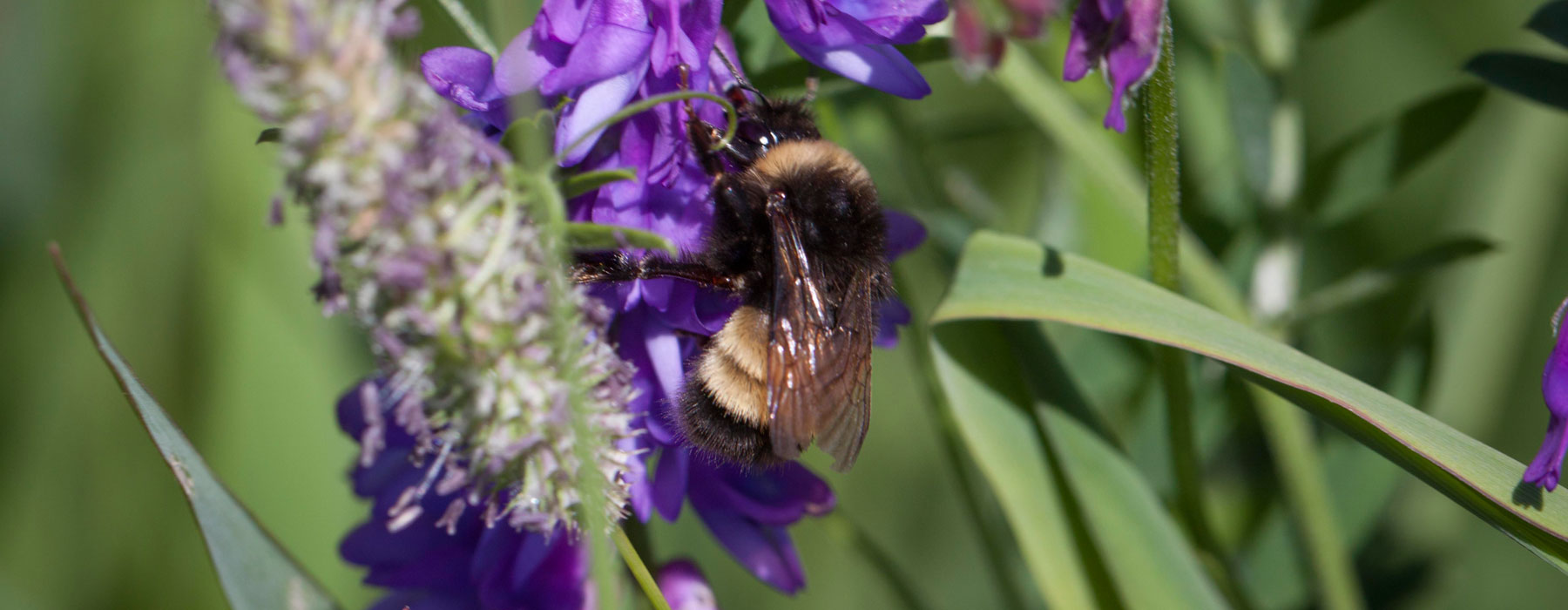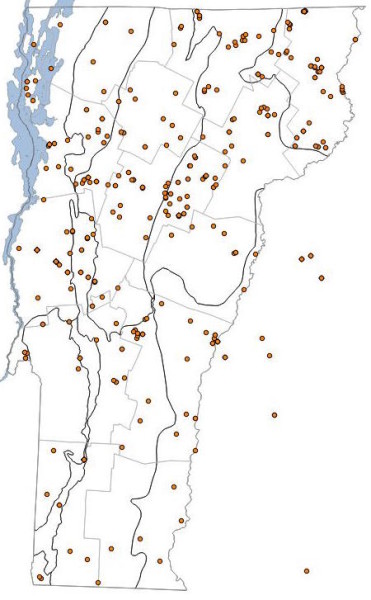Once common and found throughout the northeast and south into Georgia, B. terricola populations have experienced a dramatic decline over the past 15 years, and this species was recently listed as Threatened in Vermont. This is a short tongued species and is a frequent nectar robber.
Select food plants: Vaccinium, Salix (Willows), Rosa (Roses), Rubus, Lonicera (Honeysuckles), Solidago (Goldenrods), Asters
Tongue Length: short
Nest: nests underground
Parasitized by: B. ashtoni
Similar Species: B. pensylvanicus
General Phenology:
queens: April – September
workers: May – September
males: May – October
Learn More:
Discover Life species page
Encyclopedia of Life species account
Reports:
McFarland, K.P., Richardson, L. and Zahendra, S. 2014. Yellow-banded Bumble Bee (Bombus terricola): Species Documentation Report to the Vermont Endangered Species Committee. Vermont Center for Ecostudies, unpub. report. (PDF)








